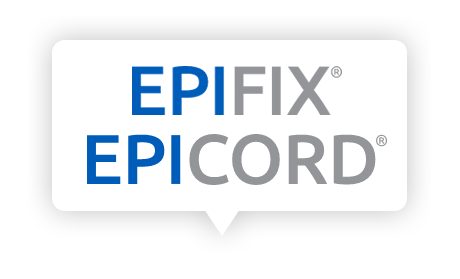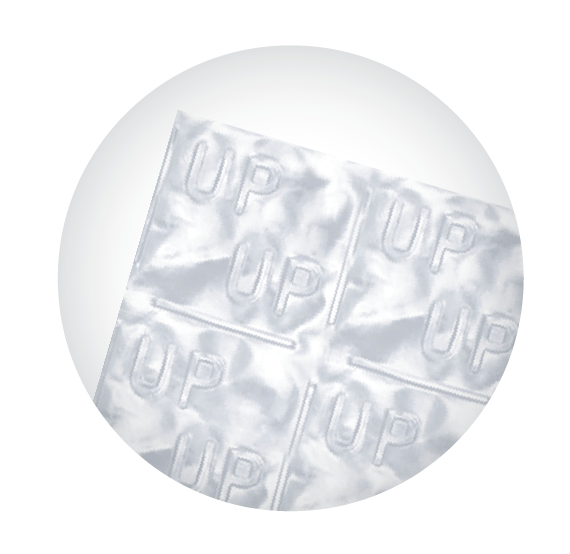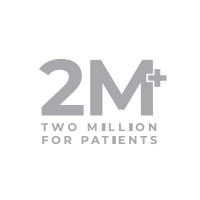
The AHRQ’s Skin Substitutes for Treating Chronic Wounds Technical Brief:
- Describes the various products commercially available in the United States that may be considered skin substitutes
- Examines systems used to classify skin substitutes
- Identifies and assesses the clinical literature evaluating skin substitutes published since the 2012 AHRQ Skin Substitute report
- Suggests the best practices that may be part of any future studies evaluating skin substitutes
The Centers for Medicare and Medicaid Services (CMS) requested this report from the Evidence-based Practice Center (EPC) Program at the AHRQ to assist public- and private-sector organizations in their efforts to improve the quality of health care in the United States. The EPC evidence reports and technology assessments inform individual health plans, providers, and purchasers as well as the health care system as a whole by providing important information to help improve health care quality.

Bringing the Data into
Focus
At the request of CMS, the Federal Agency for Healthcare Research and Quality(AHRQ) sponsored a technical brief evaluating 245 published studies of skin substitutes from 76 manufacturers.1
The AHRQ’s Skin Substitutes for Treating Chronic Wounds Technical Brief:
- Describes the various products commercially available in the United States that may be considered skin substitutes
- Examines systems used to classify skin substitutes
- Identifies and assesses the clinical literature evaluating skin substitutes published since the 2012 AHRQ Skin Substitute report
- Suggests the best practices that may be part of any future studies evaluating skin substitutes
The Centers for Medicare and Medicaid Services (CMS) requested this report from the Evidence-based Practice Center (EPC) Program at the AHRQ to assist public- and private-sector organizations in their efforts to improve the quality of health care in the United States. The EPC evidence reports and technology assessments inform individual health plans, providers, and purchasers as well as the health care system as a whole by providing important information to help improve health care quality.
Why did the AHRQ sponsor the report?
The AHRQ’s Skin Substitutes for Treating Chronic Wounds Technical Brief:
- Describes the various products commercially available in the United States that may be considered skin substitutes
- Examines systems used to classify skin substitutes
- Identifies and assesses the clinical literature evaluating skin substitutes published since the 2012 AHRQ Skin Substitute report
- Suggests the best practices that may be part of any future studies evaluating skin substitutes
What is an AHRQ Technical Brief?
The Centers for Medicare and Medicaid Services (CMS) requested this report from the Evidence-based Practice Center (EPC) Program at the AHRQ to assist public- and private-sector organizations in their efforts to improve the quality of health care in the United States. The EPC evidence reports and technology assessments inform individual health plans, providers, and purchasers as well as the health care system as a whole by providing important information to help improve health care quality.
A systematic search was performed of the published literature and grey literature since 2012.
245
studies from 76 skin substitute manufacturers were conducted
The EPC consulted a panel of Key Informants who represent subject experts and end-users of research to develop the criteria for included studies. Scroll down to view the full list of Guiding Questions.
22
of the 245 studies met criteria to be a Randomized Controlled Trial (RCT)
12
of these 22 RCTs met the inclusion criteria for “low risk-of-bias”
9
of these 12 studies met primary endpoints
5
of these 9 were from MIMEDX
MIMEDX Study Quality Was Validated as Best in Class

EPIFIX is a tissue allograft composed of dehydrated human amnion / chorion membrane (DHACM). It provides a semi-permeable protective barrier and human extracellular matrix (ECM) to protect the wound bed to aid in the development of granulation tissue.
Retains over 300 regulatory proteins2-4
Provides a Human Biocompatible Extracellular Matrix (ECM)
Easy to use and store
Available in fenestrated / mesh configurations

Retains 250+ regulatory proteins4-5
Easy to use and store
Thick graft that allows for suturing to keep the graft in place
Available in 2 cm x 3 cm expandable configuration – expands to 12 cm2
Guiding Questions from the 2020 AHRQ Technical Brief1
- What products are commercially available in the United States that may be considered skin substitutes?
- What classification systems have been developed to categorize skin substitutes?
- What are important skin substitute parameters and active components currently being used when classifying skin substitutes?
- What are the study design characteristics (such as those listed below) in each included investigation for each chronic wound type?
- Comparator to skin substitute
- Inclusion/exclusion criteria of patients including at least age, gender, and general health requirements (e.g., status of HbA1c, diabetes, peripheral vascular disease, obesity, smoking, renal)
- Inclusion/exclusion criteria of wounds including at least wound type, wound size/depth/duration/severity, vascular status, infection status, and prior treatment requirements (e.g., no treatment with growth factors or negative pressure wound therapy)
- Patient characteristics of enrollees including at least age, gender, general health (e.g., status of HbA1c, diabetes, peripheral vascular disease, obesity, smoking, renal), and prior and concurrent wound treatments
- Wound characteristics of enrollees including at least wound type, wound size/depth/duration/severity, vascular status, and infection status
- Basic study design and conduct information including at least method of patient enrollment, care setting, and use of run-in period
- Definition of wound characteristics: definition of “failure to heal” and definition of a successfully healed wound
- Method of applying skin substitutes including provider, frequency of application, definition of standard of care, and handling of infections
- Measurement and assessment methods including method of assessment(s), frequency and time points for assessment(s), and blinding of assessors
- Statistical methods including power calculations, intent-to-treat analysis for studies designed to test superiority, and handling of dropouts
- What are the outcomes of treatment strategies including skin substitutes alone and/or in addition to other wound care modalities compared to other wound care modalities in patients with different types of chronic wounds, for patient-oriented outcomes such as the following? Consider at least:
-
- Number/percentage of completely closed/healed wounds (skin closure with complete re-epithelialization without drainage or dressing requirements versus failure to heal)
- Time to complete wound closure
- Wound recurrence (reoccurrence) (include time when initial wound healing was measured, and follow-up to assess durability of healed wounds)
- Wound infection
- Need for amputation
- Need for hospitalization (frequency and duration)
- Return to baseline activities of daily living and function
- Pain reduction
- Exudate and odor reduction
- Adverse effects (besides those above)
- What skin substitutes are currently being investigated in ongoing trials?
- What best practices in study design could be used to produce high-quality evidence on skin substitutes?
A systematic search was performed of the published literature (EMBASE, MEDLINE, PubMed, CINAHL) and grey literature since 2012. Scientific packets from manufacturers were received during AHRQ’s call for Supplemental Evidence and Data for Systematic Reviews (SEADS) from March 25 to April 29, 2019. A search was conducted for systematic reviews/meta-analyses, randomized controlled trials (RCTs), and prospective nonrandomized comparative studies examining commercially available skin substitutes in individuals with diabetic foot ulcers, venous leg ulcers, pressure ulcers, and arterial leg ulcers. We data on clinical outcomes, such as complete wound healing, healing rate, and recurrence was extracted. The study eligibility criteria was compared and outcomes measured between included studies and ongoing clinical trials registered in ClinicalTrials.gov to identify trends in the field. Key Informants with expertise in chronic wound care were interviewed to help identify classification systems to categorize the skin substitutes, guide study eligibility criteria, describe limitations in the current field, and recommend best practices for designing future studies.
In designing the study questions for the report, the EPC consulted a panel of Key Informants who represent subject experts and end-users of research. Key Informant input can inform key issues related to the topic of the technical brief. Key Informants are not involved in the analysis of the evidence or the writing of the report. Therefore, in the end, study questions, design, methodologic approaches, and/or conclusions do not necessarily represent the views of individual Key Informants.
Caring for Challenging Closures when Patients Need it Most
Contact us to learn more.
866.477.4219
[email protected]

2 MILLION+ ALLOGRAFTS DISTRIBUTED FOR PATIENTS*

OVER 50 SCIENTIFIC AND CLINICAL PUBLICATIONS

#1 AMNIOTIC SKIN
SUBSTITUTE**

300 MILLION+
COVERED LIVES
*MIMEDX has supplied over two million allografts to date, through both direct and consignment shipments.
**SmartTRAK, Accessed October 7, 2022.
- Snyder DL, Sullivan N, Margolis DJ, Schoelles K. Skin substitutes for treating chronic wounds. Technology Assessment Program Project ID No. WNDT0818. (Prepared by the ECRI Institute-Penn Medicine Evidence-based Practice Center) Rockville, MD: Agency for Healthcare Research and Quality. https://www.cms.gov/Medicare/Coverage/DeterminationProcess/downloads/id109TA.pdf. Published February 2020. Accessed October 7, 2022.
- Koob TJ, Lim JJ, Massee M, Zabek N, Denozière G. Properties of dehydrated human amnion/chorion composite grafts: Implications for wound repair and soft tissue regeneration. J Biomed Mater Res B Appl Biomater. 2014;102(6):1353-1362.
- Lei J, Priddy LB, Lim JJ, Massee M, Koob TJ. Identification of Extracellular Matrix Components and Biological Factors in Micronized Dehydrated Human Amnion/Chorion Membrane. Adv Wound Care (New Rochelle). 2017;6(2):43-53.
- MIMEDX Internal Document. MM-RD-00086, Proteome Characterization of Purion Processed Dehydrated Human Amnion Chorion Membrane (dHACM) and Purion Plus Processed Dehydrated Human Umbilical Cord (dHUC) Allografts.
- Bullard JD, Lei J, Lim JJ, Massee M, Fallon AM, Koob TJ. Evaluation of dehydrated human umbilical cord biological proper ties for wound care and soft tissue healing. J Biomed Mater Res B Appl Biomater. 2019;107(4):1035-1046.